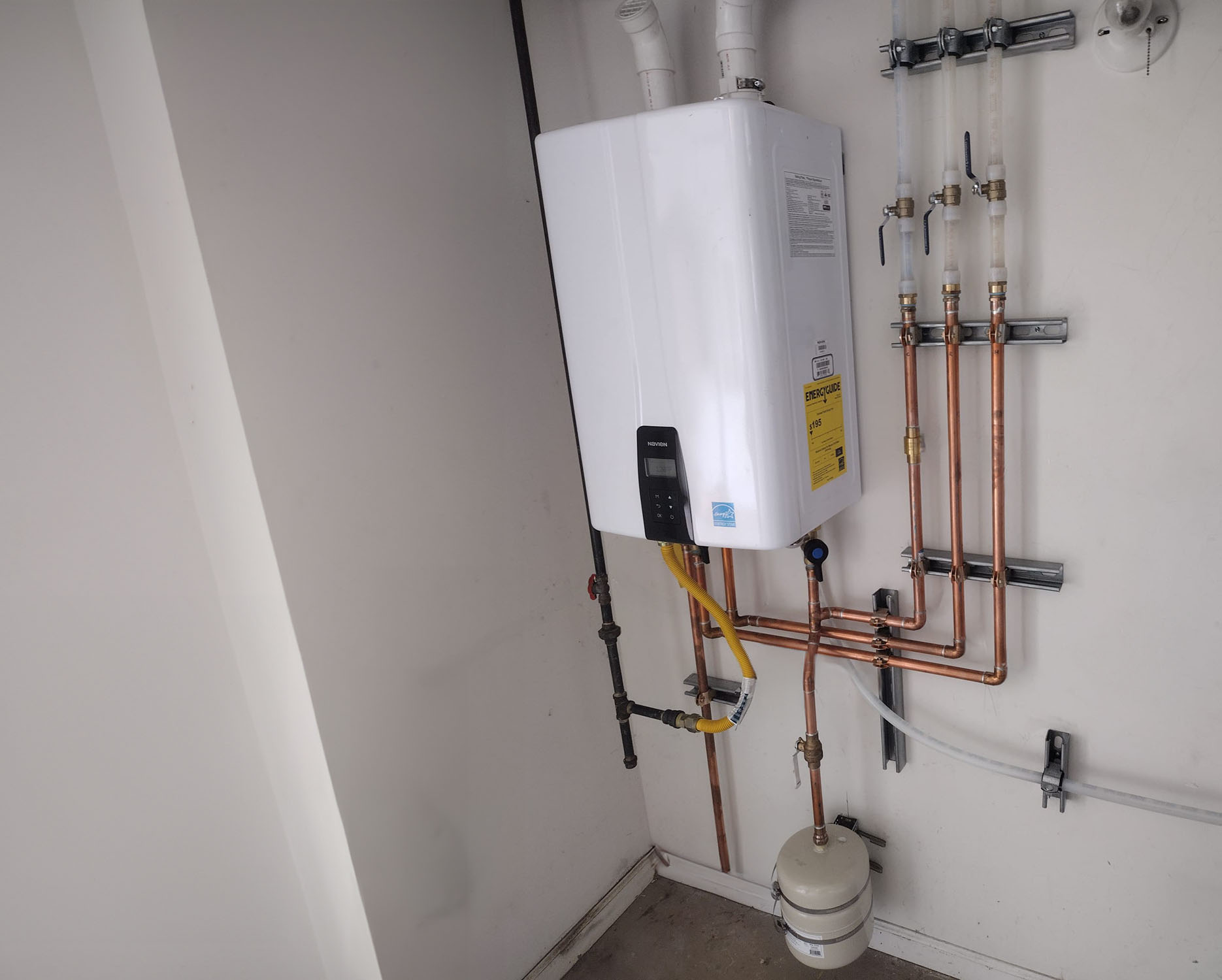

Endless Hot Water
Your trusted partner for professional home services. Quality workmanship, guaranteed satisfaction.




- HEP
- Endless Hot Water
Endless Hot Water | Tankless Water Heater Install | Plumbing | Lancing
Imagine stepping into a shower that never runs cold—morning, noon, or night. HEP’s endless hot-water specialists bring that comfort home with a seamless tankless water heater install, giving Lancing homeowners instant, on-demand heat while reclaiming the space and energy a bulky tank once consumed. Our certified plumbers size your system perfectly, arrive with clean trucks and shoe covers, and finish most projects in a single day, so you’re savoring steamy water and lower utility bills before dinner.
From the first call to the final test, we treat your property like our own, using only industry-leading equipment backed by rock-solid warranties. Whether you’re building new or upgrading an aging tank, HEP delivers the reliability, efficiency, and endless hot water your family deserves—right here in Lancing.
FAQs
How does a tankless water heater produce endless hot water?
Unlike a storage-tank cylinder that heats a fixed volume of water and then has to re-heat, a tankless (or on-demand) unit uses powerful gas burners or electric elements to heat water only when a hot tap is opened. Cold mains water passes through a heat exchanger, reaches set temperature within seconds, and is delivered continuously for as long as the tap remains open, meaning you never ‘run out’. Because the unit is not trying to keep 100–200 litres hot all day, standby heat losses are virtually eliminated.
What are the main benefits of installing a tankless system in a Lancing home?
• Space saving – the wall-mounted unit is about the size of a small suitcase, freeing up airing-cupboard or loft space. • Lower energy bills – the ENERGY STAR studies show 20–40 % less gas use than equivalent storage models. • Longer service life – 15–20 years is typical, roughly double a conventional cylinder. • Cleaner water – no standing water sitting in a tank where scale and rust can accumulate. • Eco-friendly – reduced energy demand cuts carbon emissions; many models qualify for Boiler Upgrade Scheme or local council green-home grants. • Smart features – modulating burners, wireless controllers and app monitoring allow precise temperature control and usage data.
How do I choose the correct size (flow rate) tankless heater for my property?
Sizing is based on simultaneous hot-water demand and the temperature rise required. We add up the flow rates of fixtures that may run together – e.g., shower (9 l/min) + kitchen tap (5 l/min) + washing machine (6 l/min) ≈ 20 l/min. Then we calculate the temperature rise: average Lancing mains arrives around 10 °C; you normally want 50 °C water, so a 40 °C rise is needed. A unit that can deliver 20 l/min at a 40 °C rise (roughly a 37 kW gas model) would be recommended. Our engineer will complete a free site survey, assessing gas meter capacity, venting routes and water hardness before presenting model options.
What does the installation process involve and how long does it take?
1. Pre-installation survey – confirm gas supply size, flue termination point, electrical outlet and condensate drain. 2. Removal of old cylinder/boiler if required. 3. Mounting the tankless unit on an external or internal wall. 4. Upgrading gas pipework (most modern units need 22–28 mm copper) and installing a concentric or twin-pipe flue through the wall or roof. 5. Connecting cold/hot water lines with isolation valves and a pressure relief valve. 6. Routing the condensate line to a suitable waste. 7. Commissioning – gas pressure test, combustion analysis, water-temperature calibration and registration with Building Control (Part L). Most straightforward swaps are completed in one day; complex re-pipes or flue runs can take two. All work in Lancing is carried out by Gas Safe-registered engineers and includes a Building Regulations compliance certificate.
What does a tankless installation cost and how much can I expect to save?
Installed prices in Lancing typically run £1,800–£2,800 including labour, flue kit, scale filter and VAT. Electric units cost less upfront (£900–£1,300) but can be more expensive to run unless paired with solar PV. A family of four moving from a G-rated 150 litre cylinder to a condensing gas tankless model saves about 1,200 kWh a year – roughly £175 at current Southern Gas Network tariffs – plus avoids 270 kg of CO₂. Savings vary with usage patterns; homes that draw hot water intermittently (e.g., empty nesters) see the highest percentage reductions because standby losses are eliminated.
What maintenance and warranty considerations should I be aware of?
Annual service is required to keep the manufacturer’s 5- to 12-year heat-exchanger warranty valid. The visit usually includes a combustion check, cleaning the water filter and inspecting the flue and condensate trap. In Lancing’s moderately hard water (240 ppm), we fit a phosphate or scale-reduction filter and recommend a full descaling flush every 2–3 years; neglecting this can reduce efficiency and void warranty. Most brands offer parts-and-labour cover if the unit is registered within 30 days of install and serviced by a Gas Safe engineer. We schedule automatic reminders and provide digital service records for your peace of mind.